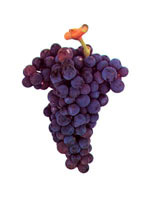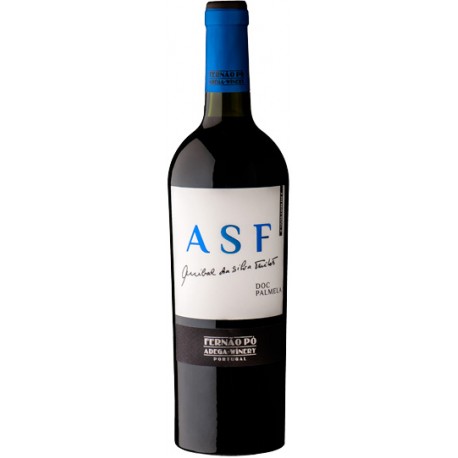ASF Red wine DOC Palmela
FP08
New product
Here shines Castelão, the most famous grape variety from the Setubal Peninsula, combined with cherry aromas from Cabernet Sauvignon.
In the mouth it is engaging and full, thanks to Tannat, with spices, chocolate and smoked notes. Aged 6 months in barrels, it as silky tannins and long after taste.
An elegant mate for strong cheeses and roasts.
More info
Premium Red Wine from Palmela region
Grape Varieties: Castelão (80%), Cabernet Sauvignon and Tannat
Terroir: Sandy soil, mediterranic climate
Winemaking
Long fermentation in “lagar” vats, pumped over 4 times per day, with manual jet, temperature control, délestage.
Aged 12 months in new barrels from different botanical species and toasts.
Suggestions: Serve at 18º to 19ºC. Drink now or store for 5 to 7 years
Packaging: Bottle: 75 Cl, 6 unit cases
Alcohol by Vol: 14,5%
Awards History
Mundus Vini 2015 Gold Medal
Mundus Vini 2013 Gold Medal
The Grapes
 Castelão
Castelão
Being the most cultivated grape varietal in the south of Portugal, Castelão possesses a great ability to adapt to various different climate conditions, hence providing it a notable versatility.
The Castelão grape is known in the Setubal Peninsula region as "Periquita", a name that originated from the vineyard property Cova da Periquita, located in Azeitão, where it was first planted the varietal back in 1830.
With an area occupying around sixty-percent of the total vineyard land in the Setubal Peninsula, the fame of the wines produced with the grapes from the Cova da Periquita vineyard became widespread throughout the region.
Castelão is very well-adapted to the Setubal Peninsula and it is here where it manifests itself in all its fullness, especially within the sandy soils and old vineyards of the region, producing wines that are more structured, fleshy and intense.
The wines made with Castelão present strong, fruity aromas of cherry, currant, blackberry, raspberry and candied plum, as well as some nutty notes, which harmonize well with an aging stage in oak barrels. In general, Castelão wines exhibit excellent aging ability.
 Cabernet Sauvignon
Cabernet Sauvignon
Cabernet Sauvignon is the most international of all French grape varieties, being widely grown across all five continents.
It has found a special niche and style in the Setubal Peninsula, one of the few Portuguese winegrowing regions where it can ripen to perfection.
Cabernet Sauvignon is one of those varieties that can be termed "enriching"; deeply colored and thick-skinned, it can spice up blends, imbuing body and consistency to well-composed, perfumed, fruity and spicy wines.
It is rarely bottled as a varietal wine in the Setubal Peninsula region, but is present in small amounts to give structure in many wines.
Appreciated for its versatility, resistance and correctness it yields wines of immense longevity that age with elegance and security.
 Tannat
Tannat
Tannat is a red-wine grape whose origins lie in the Basque country, on the border between France and Spain.
Here, in the shadow of the Pyrenees Mountains, the terrain is rough and rugged, so it is only fitting that Tannat should create wines which are equally deep, dark, dry and rustic.
Since its early days in southern France, Tannat has migrated with relative ease and is now planted in Argentina, Australia, the U.S. (California, Oregon and Virginia), Brazil, Portugal and even in southern Italy’s Puglia region, where it is used as a blending grape.
Tannat found a privileged terroir and climate in the Setubal Peninsula and it has produced wines of exceptional quality.
Tannat is characterized by its firm tannin structure, deep color, high alcohol and its ability to age well. The aroma profile is gently tarry and redolent of stewed red berries (“warm raspberry jam” sums this up well).









